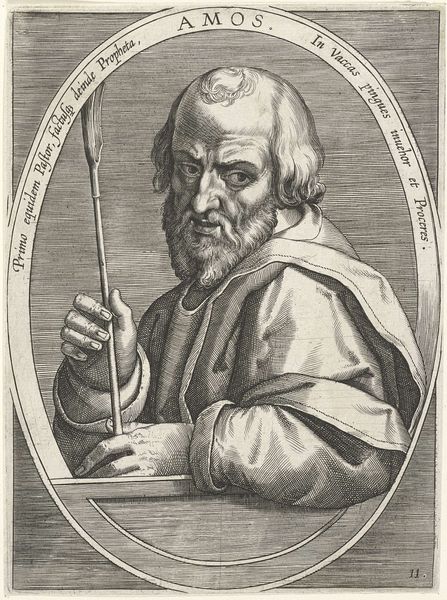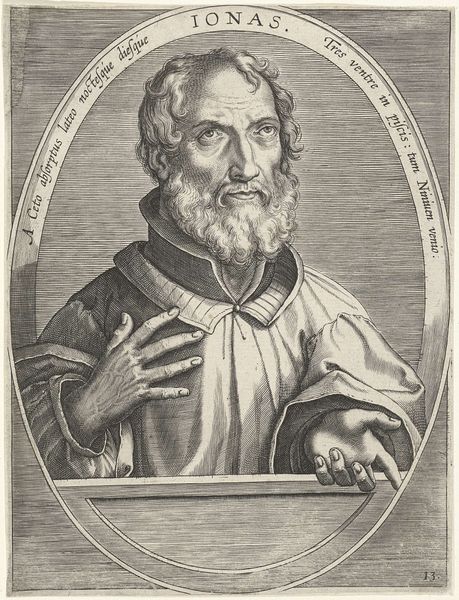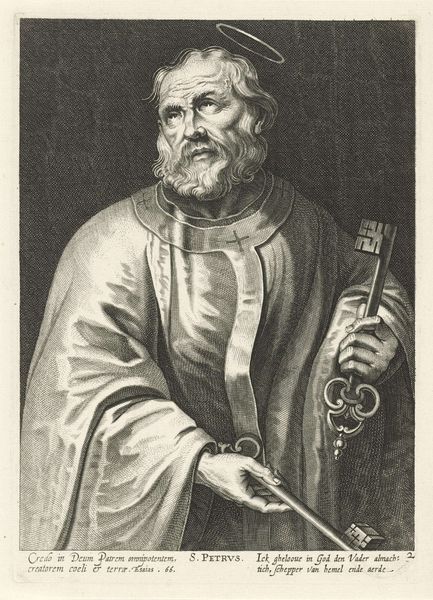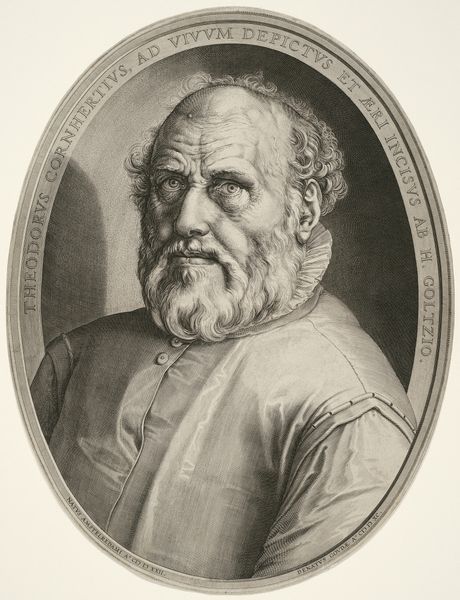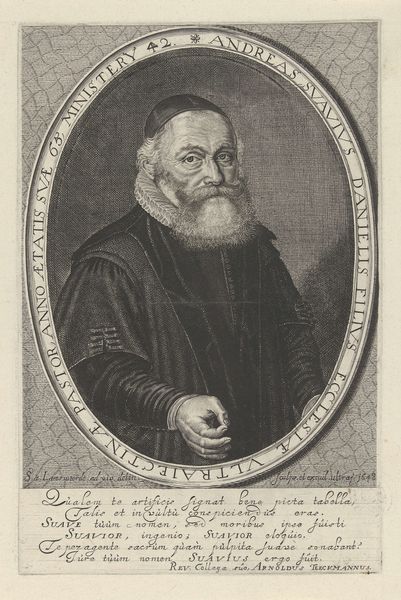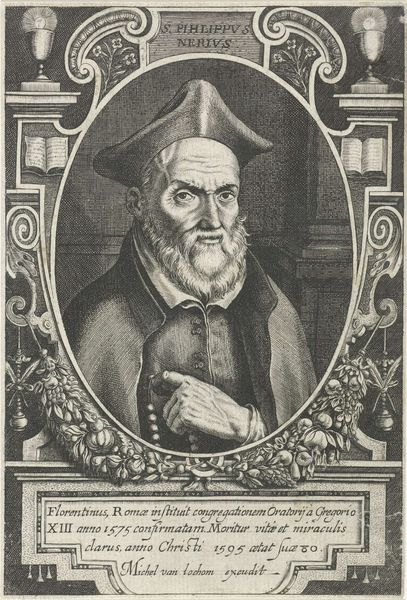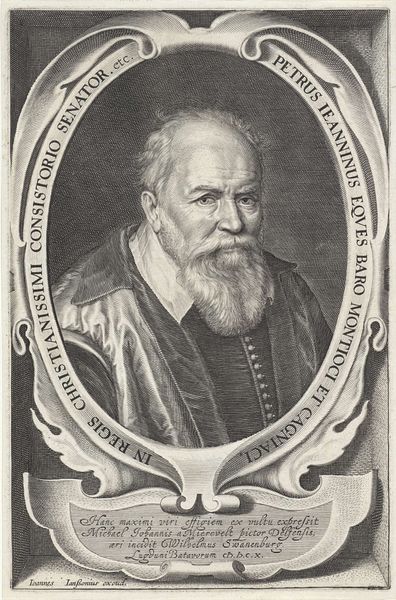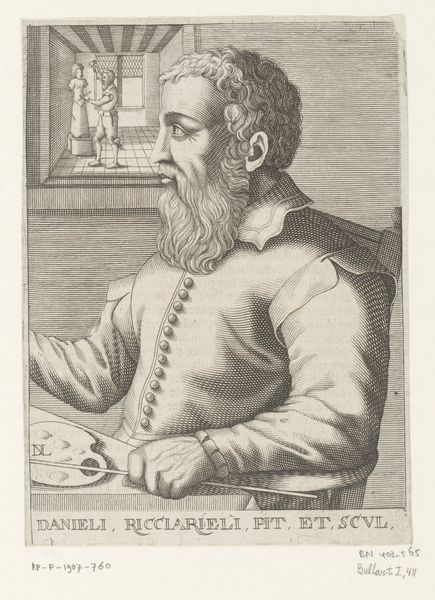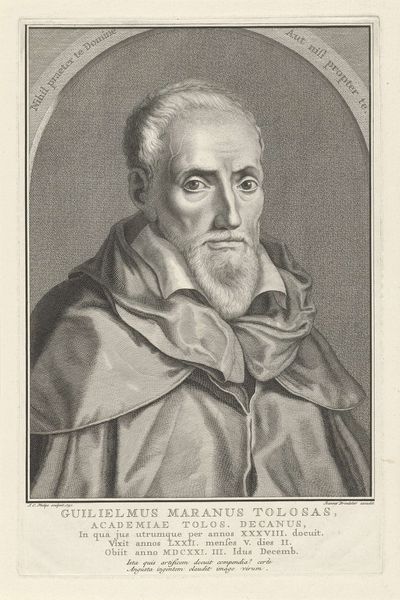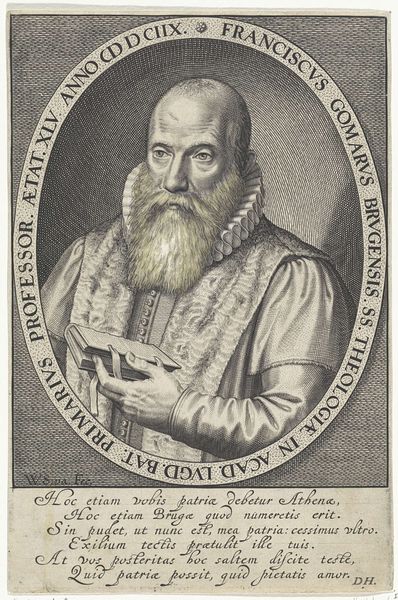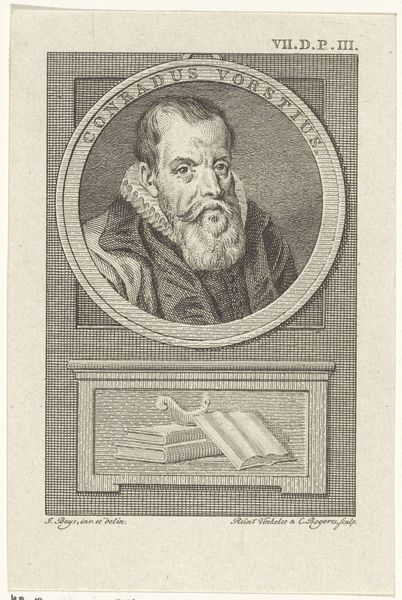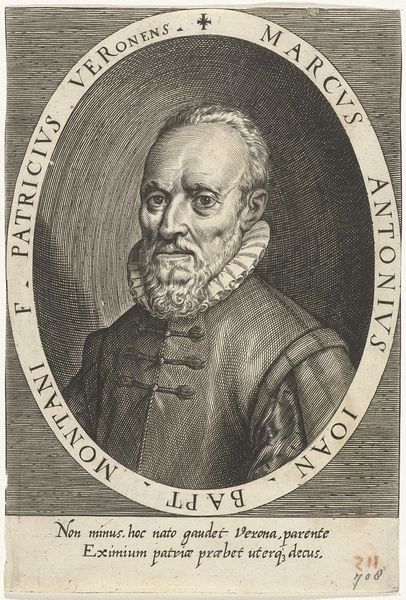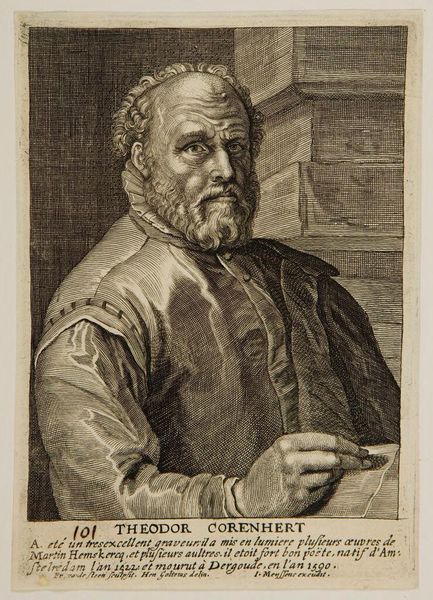
Galileo Galilei, printer's sample for the World's Inventors souvenir album (A25) for Allen & Ginter Cigarettes 1888
0:00
0:00
drawing, print, etching
#
portrait
#
drawing
#
16_19th-century
# print
#
etching
#
framed image
#
portrait drawing
#
portrait art
Dimensions: Sheet: 2 3/4 x 1 1/2 in. (7 x 3.8 cm)
Copyright: Public Domain
Curator: Here we have an interesting specimen: a printer's sample from 1888 titled "Galileo Galilei," intended for the "World's Inventors" souvenir album by Allen & Ginter Cigarettes. Editor: It's peculiar seeing the iconic scientist portrayed like this. The color lithography makes him look oddly rosy, almost airbrushed, certainly an uncanny treatment for the legendary thinker. Curator: It is jarring when we see it out of the larger societal context, yes. The cards like these were intended as collectibles packaged with tobacco products, and served both as advertising and a means of popular education. It brings the lofty ideals of science down to earth—literally, accessible on the same level as your everyday vice. Editor: Exactly, and to think about the printing process! Mass production techniques allowed these portraits to proliferate—but look at the etching. It lacks the fineness of traditional portraiture, trading detail for reproducibility. Consider the workers, churning these out to entice cigarette buyers... Curator: And how such imagery helps shape our understanding of intellectual achievement. Allen & Ginter elevated figures like Galileo to celebrity status, associating them with progress and innovation. The context here is crucial; the aim was not so much reverence as the bolstering of an ambitious brand in the burgeoning market of ready-made cigarettes. The circulation of the print helped perpetuate existing iconography as much as generate something completely new. Editor: I suppose in this context, scientific achievement becomes commodified alongside tobacco. Does the legacy of someone like Galileo become diluted through its mass production? I’m compelled by this intersection of commerce and intellectual authority, even if a touch cynical. Curator: Certainly, the presentation simplifies historical figures but also arguably democratizes knowledge—a balancing act that commercial art constantly performs. The social reach of tobacco companies was enormous, making it easy for their imagery to inform, shape, and alter society’s shared visual vocabulary. Editor: I find myself now quite drawn in to consider how we elevate our historical and cultural figures for social consumption. Curator: It presents an opportunity to contemplate the surprising sites where historical narratives take shape and how images function within power structures of their time.
Comments
No comments
Be the first to comment and join the conversation on the ultimate creative platform.
